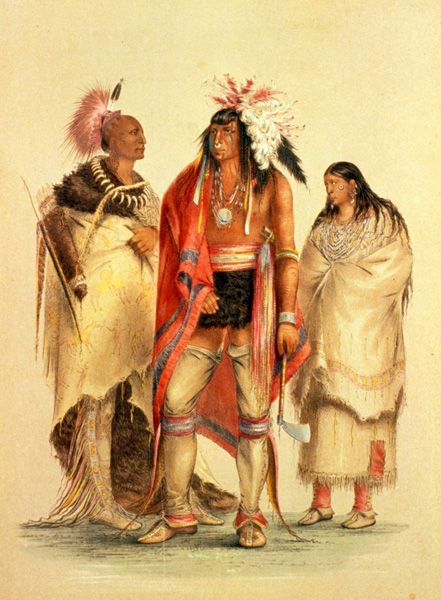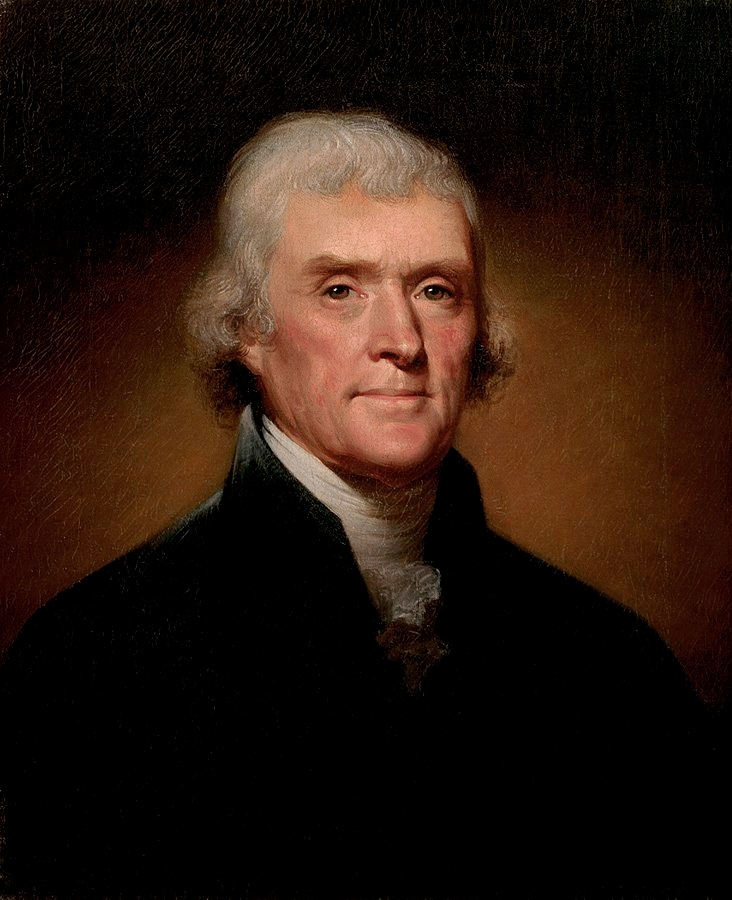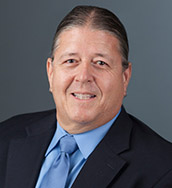Jefferson’s Osage encounter reevaluated through modern lens
LAWRENCE — Thomas Jefferson had a busy weekend.
 Between the premiere of “Hamilton,” which prominently features the third president, and a current movement to tear down his monuments due to his slave-owning legacy, the Founding Father continues to shape society nearly 200 years after his death.
Between the premiere of “Hamilton,” which prominently features the third president, and a current movement to tear down his monuments due to his slave-owning legacy, the Founding Father continues to shape society nearly 200 years after his death.
One University of Kansas professor has provided his own take on Jefferson, based on a key event during the president’s career.
“For all his genius, for his patriotism, for everything else that he brought to the table, he was also a deeply flawed person,” said Robert Warrior, Hall Distinguished Professor of American Literature and Culture at KU. “It doesn’t diminish his genius to tell the truth about his flaws.”
Warrior is the author of an article titled “‘The Finest Men We Have Ever Seen’: Reading Jefferson’s Osage Encounters through ‘Orientalism.’”
 In 1804, a delegation of Osages traveled to Washington, D.C., to meet with Jefferson. After their meeting, he wrote that the Osages were “the finest men we have ever seen.” Using Jefferson’s comment as a starting point, Warrior’s essay offers an alternative to most approaches in Native and Indigenous studies, also relating this episode to contemporary history that includes Black Lives Matter, the Dakota Access Pipeline and the Unite the Right white supremacist rally in Charlottesville.
In 1804, a delegation of Osages traveled to Washington, D.C., to meet with Jefferson. After their meeting, he wrote that the Osages were “the finest men we have ever seen.” Using Jefferson’s comment as a starting point, Warrior’s essay offers an alternative to most approaches in Native and Indigenous studies, also relating this episode to contemporary history that includes Black Lives Matter, the Dakota Access Pipeline and the Unite the Right white supremacist rally in Charlottesville.
It appears in Ariel: A Review of International English Literature.
“The article helps get at how blackness, indigeneity and whiteness have worked together for a long time to impact the direction of American history,” said Warrior, who is a member/citizen of the Osage Nation.
Calling the Osages “the finest men we have ever seen” may sound like a compliment. But, according to Warrior, the phrase had a multitude of meanings when considering its context.
“The lens through which Jefferson sees the Osages is similar to what everybody at that time would’ve had. They could be the finest men we’ve ever seen — which seems to be a very positive thing — and yet the easy part to misunderstand is how a statement like that could mask a misapprehension on the part of Jefferson,” he said.
 Warrior explains that while Jefferson observes a group of shirtless individuals who are exceptionally tall and physically impressive, he also misses the underlying truth in what they represent.
Warrior explains that while Jefferson observes a group of shirtless individuals who are exceptionally tall and physically impressive, he also misses the underlying truth in what they represent.
“Jefferson can’t see that they’re already their own people with their own sense of their own peoplehood,” he said.
Much of the president’s impressions were shaped by 18th century tenets of how race was perceived.
“Jefferson believed people of African descent are at the bottom of a racial hierarchy,” he said. “And the difference between Indigenous people and those of African descent is that people of African descent don’t have the ability to become a part of the American society that Jefferson imagines. But Native Americans do have the potential to be amalgamated into this larger ideal of what the U.S. is – even though amalgamation would entail dismantling every aspect of indigeneity, including language, ceremonies, stories and songs.”
This fundamental misconception of racial hierarchy can be applied to today, Warrior argues, most notably in regard to the recent protests across the nation.
“In the aftermath of what happened to George Floyd, I’ve seen a lot of evidence of American Indian people standing in solidarity and saying that Black Lives Matter. What happens to black bodies within the United States is something everybody needs to pay attention to and ought to be fighting to make things better,” he said, noting that the American Indian Movement (AIM) was actually founded in Minneapolis as a response to police abuse.
“The only group that has a higher disproportionate rate of suffering from police violence is Native American people,” he added.
One of the key concepts in Warrior’s article involves the term “Orientalism,” the distorted and patronizing lens through which Westerners view cultures from the Middle East, Asia and North Africa. It’s based on the foundational 1978 book “Orientalism” by Edward Said.
Warrior was fortunate to take classes from Said while studying at Union Theological Seminary in New York.
“It was an unbelievably important experience,” he said.
One of Said’s lessons that proved especially helpful to him as a scholar was to take a different direction than what he sees others do with Native American history, which is often focused on chopping through the ways things have been misrepresented to find a truer representation.
“There’s a cautionary aspect of Said’s work that says what we really want to do is question the very idea of representation and why we are attached to representing enormous geography or incredibly large populations by generalizing about them. That actually cuts against the grain for those of us committed to creating a better world for people for whom things are not good right now,” he said.
Racial profiling, he said, which so often seems to fuel race-based disparities in policing, is a form of allowing a representation (a stereotype or a set of expectations derived from a generalized perception of blackness or indigeneity) to guide responses and reactions.
He said, “In an important sense, George Floyd never appears as George Floyd to the Minneapolis Police as they took his life. The distance between being the ‘finest men we have ever seen’ and being a person who represents a dangerous threat is perhaps not that far.”
A KU faculty member since 2016, Warrior grew up in Wichita. He is the past president of the American Studies Association and a founding president of the Native American and Indigenous Studies Association.
At the time of Jefferson’s 1804 meeting, the Osages were the dominant Indigenous group in an area that included present-day Kansas, Missouri, Colorado, Arkansas and Oklahoma. They presented a “barrier to Jefferson’s ambitions on the other side of the Mississippi.” Despite the statesman’s “finest men,” observation, this meeting set in motion the Osage’s loss of all but a small corner of their vast homeland and the simultaneous importation of slavery into their territory.
“I want this article to help make sense of the history of the United States as a majority white nation that is dependent upon the slavery of African Americans and the dispossession of Native Americans,” he said. “Understanding these things together is necessary to understanding what the United States is as a nation.”
Top Image: “Osage Indians” by George Catlin. Credit: Wikimedia Commons
Middle Image: Official Presidential portrait of Thomas Jefferson by Rembrandt Peale. Credit: Wikimedia Commons.